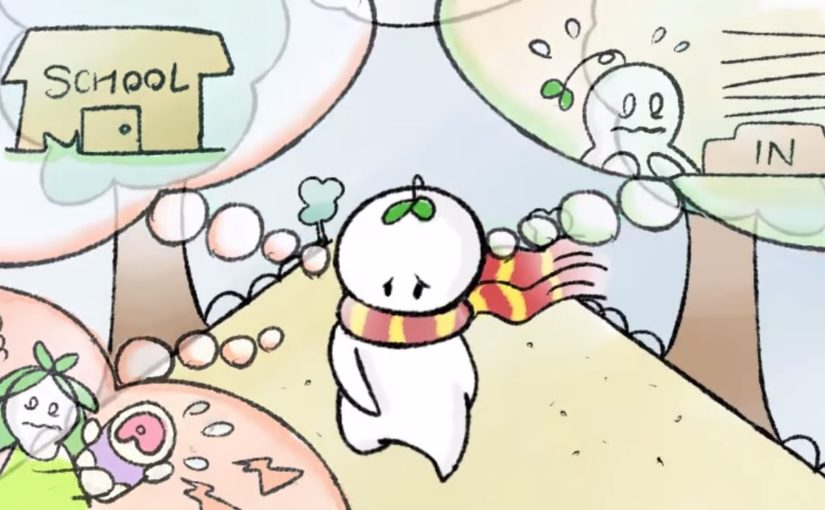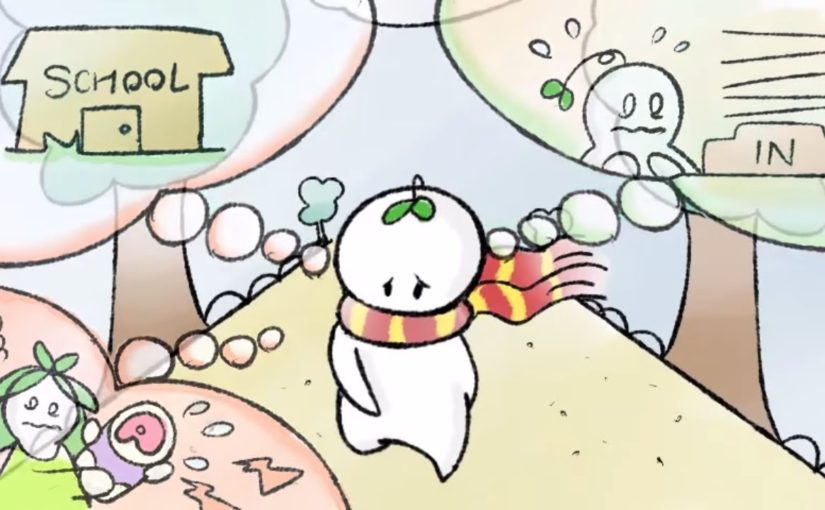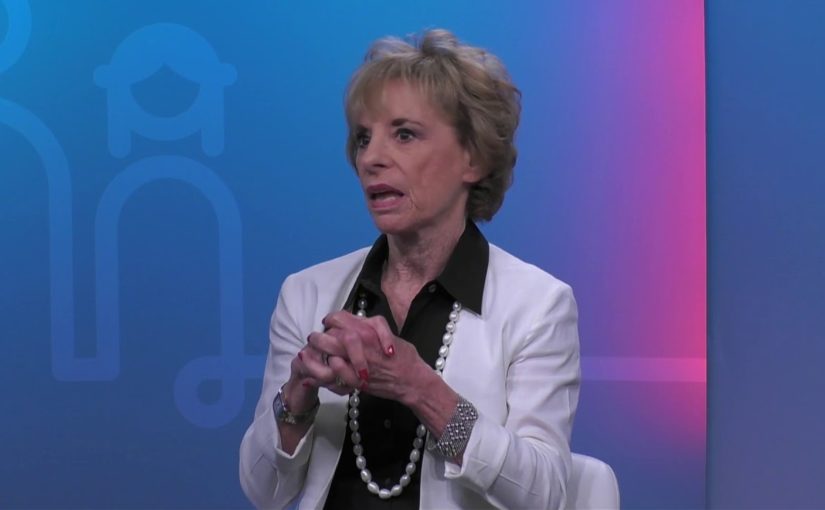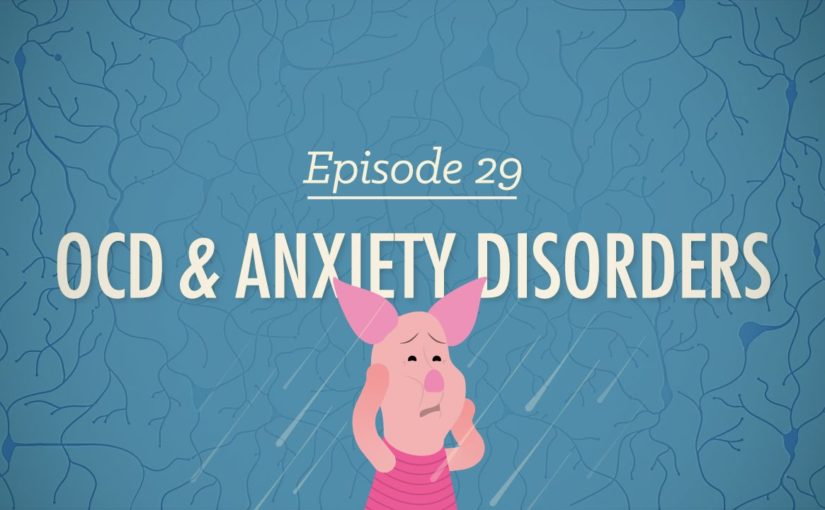 They might only be able to nod or whisper Four) Panic disorder It becomes a disorder when an individual experiences panic attacks multiple times in their lifetime Panic attacks are intense bursts of fear followed by a range of physical symptoms, these include at least four of the following: Cold sweats, Muscle stiffness or Trembling, Hyperventilation, which is fast, shallow breathing Lightheadedness, Numbness or the Fear of death and/or Insanity The fear afterward of another panic attack. Sometimes actually provokes more panic attacks More often than not, panic attacks are had in combination with other anxiety disorders Therapy along with medications can help in handling panic disorder Five) Agoraphobia Does your local train station seem intimidating? Do you feel faint in a crowded place? Agoraphobia is the fear of public places Anxiety arises because they deem them as too open or dangerous It’s triggered by fears like becoming a victim of crime or of contracting a disease or illness Its sufferers coop themselves up in their homes where they’re comfortable and familiar with their environment Agoraphobe often become over-dependent on other people to compensate for their inability to cope in public Agoraphobia can develop at any age and can be extremely debilitating Exposure therapy works effectively against Agoraphobia in conjunction with medication Six) Specific Phobia These are persistent and extreme fears about a specific object or situation and cause a ton of stress to the sufferer Phobias can be environmental like Acrophobia, the fear of heights and they can be animal-based Or even situational like Taphophobia, the fear of being buried alive Such phobias often arise due to traumatic experiences that cause people to make negative associations with these objects or situations Someone who was clawed in the face by a cat in their childhood might have an avid fear of cats in their adulthood In cases where exposure therapy may not be safe or applicable Cognitive behavioural therapy can be effective in changing a person’s negative association to their feared object or situation Seven) Obsessive-Compulsive Disorder OCD and Post-Traumatic StressDisorder PTSD Yes, OCD and PTSD were categorized by many psychiatrists as disorders to be grouped with the aforementioned anxiety disorders Recently there have been new findings about these disorders that team them both unique enough to be in categories of their own, However, this is not to suggest that OCD and PTSD are any less important to deal with The common thread that group disorders like GAD, S.A.D., panic disorder, and phobias together Is that sufferers of these anxiety disorders experience future-oriented fear? OCD differs, and though there is anxiety felt in the sufferer’s obsession They can find temporary relief in their ritualistic compulsions Unfortunately for OCD sufferers, this means a life of cyclical ritualism that can affect daily living Those suffering from PTSD May suffer anxiety-like symptoms similar to GAD or even panic disorder But PTSD is unique and that its past oriented The sufferer suffers flashbacks that bring them back to the event of their traumatization If you’re diagnosed with anxiety disorder, it’s okay Millions of people around the world understand what it’s like to suffer from an anxiety disorder, so you’re not alone Understand that every single one of these anxiety types is often treatable and manageable Also, if you know someone who may benefit from online counseling we’ve partnered up with Better Help, an affordable online counseling platform that you can utilize They’re constantly striving to improve their services and terms and conditions. The link will be in the description box Did you find this video helpful? If so, remember to share this video with those you think might benefit from it As always, Thanks for watching!As found on YouTubeFUNNELIFY is a new, first-of-its-kind, groundbreaking app ➯➱ ➫ ➪➬ which finally allows you to deliver separately auto-generated mobile pages with unheard before lighting speed. Plus it skyrockets ➯➱ ➫ ➪➬ After using the Funnelify product, you will recognize a great increase in your leads and sales. This product shows methods to boost your traffic without using any shortcuts. The best thing is that you can build unlimited …
They might only be able to nod or whisper Four) Panic disorder It becomes a disorder when an individual experiences panic attacks multiple times in their lifetime Panic attacks are intense bursts of fear followed by a range of physical symptoms, these include at least four of the following: Cold sweats, Muscle stiffness or Trembling, Hyperventilation, which is fast, shallow breathing Lightheadedness, Numbness or the Fear of death and/or Insanity The fear afterward of another panic attack. Sometimes actually provokes more panic attacks More often than not, panic attacks are had in combination with other anxiety disorders Therapy along with medications can help in handling panic disorder Five) Agoraphobia Does your local train station seem intimidating? Do you feel faint in a crowded place? Agoraphobia is the fear of public places Anxiety arises because they deem them as too open or dangerous It’s triggered by fears like becoming a victim of crime or of contracting a disease or illness Its sufferers coop themselves up in their homes where they’re comfortable and familiar with their environment Agoraphobe often become over-dependent on other people to compensate for their inability to cope in public Agoraphobia can develop at any age and can be extremely debilitating Exposure therapy works effectively against Agoraphobia in conjunction with medication Six) Specific Phobia These are persistent and extreme fears about a specific object or situation and cause a ton of stress to the sufferer Phobias can be environmental like Acrophobia, the fear of heights and they can be animal-based Or even situational like Taphophobia, the fear of being buried alive Such phobias often arise due to traumatic experiences that cause people to make negative associations with these objects or situations Someone who was clawed in the face by a cat in their childhood might have an avid fear of cats in their adulthood In cases where exposure therapy may not be safe or applicable Cognitive behavioural therapy can be effective in changing a person’s negative association to their feared object or situation Seven) Obsessive-Compulsive Disorder OCD and Post-Traumatic StressDisorder PTSD Yes, OCD and PTSD were categorized by many psychiatrists as disorders to be grouped with the aforementioned anxiety disorders Recently there have been new findings about these disorders that team them both unique enough to be in categories of their own, However, this is not to suggest that OCD and PTSD are any less important to deal with The common thread that group disorders like GAD, S.A.D., panic disorder, and phobias together Is that sufferers of these anxiety disorders experience future-oriented fear? OCD differs, and though there is anxiety felt in the sufferer’s obsession They can find temporary relief in their ritualistic compulsions Unfortunately for OCD sufferers, this means a life of cyclical ritualism that can affect daily living Those suffering from PTSD May suffer anxiety-like symptoms similar to GAD or even panic disorder But PTSD is unique and that its past oriented The sufferer suffers flashbacks that bring them back to the event of their traumatization If you’re diagnosed with anxiety disorder, it’s okay Millions of people around the world understand what it’s like to suffer from an anxiety disorder, so you’re not alone Understand that every single one of these anxiety types is often treatable and manageable Also, if you know someone who may benefit from online counseling we’ve partnered up with Better Help, an affordable online counseling platform that you can utilize They’re constantly striving to improve their services and terms and conditions. The link will be in the description box Did you find this video helpful? If so, remember to share this video with those you think might benefit from it As always, Thanks for watching!As found on YouTubeFUNNELIFY is a new, first-of-its-kind, groundbreaking app ➯➱ ➫ ➪➬ which finally allows you to deliver separately auto-generated mobile pages with unheard before lighting speed. Plus it skyrockets ➯➱ ➫ ➪➬ After using the Funnelify product, you will recognize a great increase in your leads and sales. This product shows methods to boost your traffic without using any shortcuts. The best thing is that you can build unlimited …7 Types of Anxiety Disorders
Do you find yourself feeling stressed out when you’re studying for an important exam Or when you’re practicing repeatedly in front of a mirror before a presentation? It’s perfectly normal to feel stressed out or anxious now and then Unfortunately for some of us our anxiety can get so out of hand that we feel this way constantly That chronic feeling of anxiousness and fear is the marking of an anxiety disorder Before we begin we’d like to make a short disclaimer Please don’t use this video to self-diagnose! If you can relate to most of the signs, we do advise you to go to a qualified medical health professional for proper diagnosis With that being said, Psych2Go presents to you the Seven Types of Anxiety Disorders One) Generalized anxiety disorder also known as GAD It’s the most common among anxiety disorders to be diagnosed People with GAD suffer from intense and persistent worry a GAD sufferer can worry or feel anxious about a number of events ranging from school or work to their family life at home This anxiety is associated with at least three of these symptoms: Restlessness, Fatigue, Difficulty Concentrating, Irritability, Muscle Tension, Insomnia, or Difficulty Falling Asleep People with GAD, often can’t explain their anxiety using specific fears like those with more specific anxiety disorders can And this is because their anxiety stems from various stimuli Those who suffer from GAD can find relief in a number of treatment options ranging from mindfulness meditation and brisk exercise to cognitive-behavioural therapies and medications. Two) Separation Anxiety Disorder This type of anxiety is more common in children than adults. For many, the mere thought of separation causes a high amount of stress People with separation anxiety worry that something unexpected could separate them from their attachment figure Or that their attachment figure will abandon them This anxiety presents as nightmares of being alone and a persistent refusal to leave their attachment figure Kids with separation anxiety may be clingy and insist on sleeping with their parents at night Children often grow out of separation anxiety disorder, but if it persists for six months or longer, they should be provided help Adult sufferers may also find benefit from the available therapies Three) Social Anxiety Disorder, Social Phobia, and Selective mutism Social anxiety disorder also known as “S.A.D.” refer to the fear of public situations and exposure to unfamiliar people S.A.D. sufferers tend to avoid situations in which they’re in the spotlight because they’re worried that they’ll be embarrassed or judged by others The thought or the anticipation alone of an upcoming social situation can cause major anxiety-related symptoms like panic attacks or severe stomach pain People with S.A.D. May show signs of stress in these forms: Little to no eye contact, Freezing in place, Running off, or Avoiding tasks like eating in public Children and adults alike can suffer from S.A.D. But some children with social anxiety may also have a more intense ability to function in social situations Selective mutism is a type of social anxiety in which a child is unable to speak in social situations Despite being able to speak normally otherwise Often, this problem arises at school or in the presence of strangers If a child with selective mutism can communicate at all.  They might only be able to nod or whisper Four) Panic disorder It becomes a disorder when an individual experiences panic attacks multiple times in their lifetime Panic attacks are intense bursts of fear followed by a range of physical symptoms, these include at least four of the following: Cold sweats, Muscle stiffness or Trembling, Hyperventilation, which is fast, shallow breathing Lightheadedness, Numbness or the Fear of death and/or Insanity The fear afterward of another panic attack. Sometimes actually provokes more panic attacks More often than not, panic attacks are had in combination with other anxiety disorders Therapy along with medications can help in handling panic disorder Five) Agoraphobia Does your local train station seem intimidating? Do you feel faint in a crowded place? Agoraphobia is the fear of public places Anxiety arises because they deem them as too open or dangerous It’s triggered by fears like becoming a victim of crime or of contracting a disease or illness Its sufferers coop themselves up in their homes where they’re comfortable and familiar with their environment Agoraphobe often become over-dependent on other people to compensate for their inability to cope in public Agoraphobia can develop at any age and can be extremely debilitating Exposure therapy works effectively against Agoraphobia in conjunction with medication Six) Specific Phobia These are persistent and extreme fears about a specific object or situation and cause a ton of stress to the sufferer Phobias can be environmental like Acrophobia, the fear of heights and they can be animal-based Or even situational like Taphophobia, the fear of being buried alive Such phobias often arise due to traumatic experiences that cause people to make negative associations with these objects or situations Someone who was clawed in the face by a cat in their childhood might have an avid fear of cats in their adulthood In cases where exposure therapy may not be safe or applicable Cognitive behavioural therapy can be effective in changing a person’s negative association to their feared object or situation Seven) Obsessive-Compulsive Disorder OCD and Post-Traumatic StressDisorder PTSD Yes, OCD and PTSD were categorized by many psychiatrists as disorders to be grouped with the aforementioned anxiety disorders Recently there have been new findings about these disorders that team them both unique enough to be in categories of their own, However, this is not to suggest that OCD and PTSD are any less important to deal with The common thread that group disorders like GAD, S.A.D., panic disorder, and phobias together Is that sufferers of these anxiety disorders experience future-oriented fear? OCD differs, and though there is anxiety felt in the sufferer’s obsession They can find temporary relief in their ritualistic compulsions Unfortunately for OCD sufferers, this means a life of cyclical ritualism that can affect daily living Those suffering from PTSD May suffer anxiety-like symptoms similar to GAD or even panic disorder But PTSD is unique and that its past oriented The sufferer suffers flashbacks that bring them back to the event of their traumatization If you’re diagnosed with anxiety disorder, it’s okay Millions of people around the world understand what it’s like to suffer from an anxiety disorder, so you’re not alone Understand that every single one of these anxiety types is often treatable and manageable Also, if you know someone who may benefit from online counseling we’ve partnered up with Better Help, an affordable online counseling platform that you can utilize They’re constantly striving to improve their services and terms and conditions. The link will be in the description box Did you find this video helpful? If so, remember to share this video with those you think might benefit from it As always, Thanks for watching!As found on YouTubeFUNNELIFY is a new, first-of-its-kind, groundbreaking app ➯➱ ➫ ➪➬ which finally allows you to deliver separately auto-generated mobile pages with unheard before lighting speed. Plus it skyrockets ➯➱ ➫ ➪➬ After using the Funnelify product, you will recognize a great increase in your leads and sales. This product shows methods to boost your traffic without using any shortcuts. The best thing is that you can build unlimited …
They might only be able to nod or whisper Four) Panic disorder It becomes a disorder when an individual experiences panic attacks multiple times in their lifetime Panic attacks are intense bursts of fear followed by a range of physical symptoms, these include at least four of the following: Cold sweats, Muscle stiffness or Trembling, Hyperventilation, which is fast, shallow breathing Lightheadedness, Numbness or the Fear of death and/or Insanity The fear afterward of another panic attack. Sometimes actually provokes more panic attacks More often than not, panic attacks are had in combination with other anxiety disorders Therapy along with medications can help in handling panic disorder Five) Agoraphobia Does your local train station seem intimidating? Do you feel faint in a crowded place? Agoraphobia is the fear of public places Anxiety arises because they deem them as too open or dangerous It’s triggered by fears like becoming a victim of crime or of contracting a disease or illness Its sufferers coop themselves up in their homes where they’re comfortable and familiar with their environment Agoraphobe often become over-dependent on other people to compensate for their inability to cope in public Agoraphobia can develop at any age and can be extremely debilitating Exposure therapy works effectively against Agoraphobia in conjunction with medication Six) Specific Phobia These are persistent and extreme fears about a specific object or situation and cause a ton of stress to the sufferer Phobias can be environmental like Acrophobia, the fear of heights and they can be animal-based Or even situational like Taphophobia, the fear of being buried alive Such phobias often arise due to traumatic experiences that cause people to make negative associations with these objects or situations Someone who was clawed in the face by a cat in their childhood might have an avid fear of cats in their adulthood In cases where exposure therapy may not be safe or applicable Cognitive behavioural therapy can be effective in changing a person’s negative association to their feared object or situation Seven) Obsessive-Compulsive Disorder OCD and Post-Traumatic StressDisorder PTSD Yes, OCD and PTSD were categorized by many psychiatrists as disorders to be grouped with the aforementioned anxiety disorders Recently there have been new findings about these disorders that team them both unique enough to be in categories of their own, However, this is not to suggest that OCD and PTSD are any less important to deal with The common thread that group disorders like GAD, S.A.D., panic disorder, and phobias together Is that sufferers of these anxiety disorders experience future-oriented fear? OCD differs, and though there is anxiety felt in the sufferer’s obsession They can find temporary relief in their ritualistic compulsions Unfortunately for OCD sufferers, this means a life of cyclical ritualism that can affect daily living Those suffering from PTSD May suffer anxiety-like symptoms similar to GAD or even panic disorder But PTSD is unique and that its past oriented The sufferer suffers flashbacks that bring them back to the event of their traumatization If you’re diagnosed with anxiety disorder, it’s okay Millions of people around the world understand what it’s like to suffer from an anxiety disorder, so you’re not alone Understand that every single one of these anxiety types is often treatable and manageable Also, if you know someone who may benefit from online counseling we’ve partnered up with Better Help, an affordable online counseling platform that you can utilize They’re constantly striving to improve their services and terms and conditions. The link will be in the description box Did you find this video helpful? If so, remember to share this video with those you think might benefit from it As always, Thanks for watching!As found on YouTubeFUNNELIFY is a new, first-of-its-kind, groundbreaking app ➯➱ ➫ ➪➬ which finally allows you to deliver separately auto-generated mobile pages with unheard before lighting speed. Plus it skyrockets ➯➱ ➫ ➪➬ After using the Funnelify product, you will recognize a great increase in your leads and sales. This product shows methods to boost your traffic without using any shortcuts. The best thing is that you can build unlimited …
 They might only be able to nod or whisper Four) Panic disorder It becomes a disorder when an individual experiences panic attacks multiple times in their lifetime Panic attacks are intense bursts of fear followed by a range of physical symptoms, these include at least four of the following: Cold sweats, Muscle stiffness or Trembling, Hyperventilation, which is fast, shallow breathing Lightheadedness, Numbness or the Fear of death and/or Insanity The fear afterward of another panic attack. Sometimes actually provokes more panic attacks More often than not, panic attacks are had in combination with other anxiety disorders Therapy along with medications can help in handling panic disorder Five) Agoraphobia Does your local train station seem intimidating? Do you feel faint in a crowded place? Agoraphobia is the fear of public places Anxiety arises because they deem them as too open or dangerous It’s triggered by fears like becoming a victim of crime or of contracting a disease or illness Its sufferers coop themselves up in their homes where they’re comfortable and familiar with their environment Agoraphobe often become over-dependent on other people to compensate for their inability to cope in public Agoraphobia can develop at any age and can be extremely debilitating Exposure therapy works effectively against Agoraphobia in conjunction with medication Six) Specific Phobia These are persistent and extreme fears about a specific object or situation and cause a ton of stress to the sufferer Phobias can be environmental like Acrophobia, the fear of heights and they can be animal-based Or even situational like Taphophobia, the fear of being buried alive Such phobias often arise due to traumatic experiences that cause people to make negative associations with these objects or situations Someone who was clawed in the face by a cat in their childhood might have an avid fear of cats in their adulthood In cases where exposure therapy may not be safe or applicable Cognitive behavioural therapy can be effective in changing a person’s negative association to their feared object or situation Seven) Obsessive-Compulsive Disorder OCD and Post-Traumatic StressDisorder PTSD Yes, OCD and PTSD were categorized by many psychiatrists as disorders to be grouped with the aforementioned anxiety disorders Recently there have been new findings about these disorders that team them both unique enough to be in categories of their own, However, this is not to suggest that OCD and PTSD are any less important to deal with The common thread that group disorders like GAD, S.A.D., panic disorder, and phobias together Is that sufferers of these anxiety disorders experience future-oriented fear? OCD differs, and though there is anxiety felt in the sufferer’s obsession They can find temporary relief in their ritualistic compulsions Unfortunately for OCD sufferers, this means a life of cyclical ritualism that can affect daily living Those suffering from PTSD May suffer anxiety-like symptoms similar to GAD or even panic disorder But PTSD is unique and that its past oriented The sufferer suffers flashbacks that bring them back to the event of their traumatization If you’re diagnosed with anxiety disorder, it’s okay Millions of people around the world understand what it’s like to suffer from an anxiety disorder, so you’re not alone Understand that every single one of these anxiety types is often treatable and manageable Also, if you know someone who may benefit from online counseling we’ve partnered up with Better Help, an affordable online counseling platform that you can utilize They’re constantly striving to improve their services and terms and conditions. The link will be in the description box Did you find this video helpful? If so, remember to share this video with those you think might benefit from it As always, Thanks for watching!As found on YouTubeFUNNELIFY is a new, first-of-its-kind, groundbreaking app ➯➱ ➫ ➪➬ which finally allows you to deliver separately auto-generated mobile pages with unheard before lighting speed. Plus it skyrockets ➯➱ ➫ ➪➬ After using the Funnelify product, you will recognize a great increase in your leads and sales. This product shows methods to boost your traffic without using any shortcuts. The best thing is that you can build unlimited …
They might only be able to nod or whisper Four) Panic disorder It becomes a disorder when an individual experiences panic attacks multiple times in their lifetime Panic attacks are intense bursts of fear followed by a range of physical symptoms, these include at least four of the following: Cold sweats, Muscle stiffness or Trembling, Hyperventilation, which is fast, shallow breathing Lightheadedness, Numbness or the Fear of death and/or Insanity The fear afterward of another panic attack. Sometimes actually provokes more panic attacks More often than not, panic attacks are had in combination with other anxiety disorders Therapy along with medications can help in handling panic disorder Five) Agoraphobia Does your local train station seem intimidating? Do you feel faint in a crowded place? Agoraphobia is the fear of public places Anxiety arises because they deem them as too open or dangerous It’s triggered by fears like becoming a victim of crime or of contracting a disease or illness Its sufferers coop themselves up in their homes where they’re comfortable and familiar with their environment Agoraphobe often become over-dependent on other people to compensate for their inability to cope in public Agoraphobia can develop at any age and can be extremely debilitating Exposure therapy works effectively against Agoraphobia in conjunction with medication Six) Specific Phobia These are persistent and extreme fears about a specific object or situation and cause a ton of stress to the sufferer Phobias can be environmental like Acrophobia, the fear of heights and they can be animal-based Or even situational like Taphophobia, the fear of being buried alive Such phobias often arise due to traumatic experiences that cause people to make negative associations with these objects or situations Someone who was clawed in the face by a cat in their childhood might have an avid fear of cats in their adulthood In cases where exposure therapy may not be safe or applicable Cognitive behavioural therapy can be effective in changing a person’s negative association to their feared object or situation Seven) Obsessive-Compulsive Disorder OCD and Post-Traumatic StressDisorder PTSD Yes, OCD and PTSD were categorized by many psychiatrists as disorders to be grouped with the aforementioned anxiety disorders Recently there have been new findings about these disorders that team them both unique enough to be in categories of their own, However, this is not to suggest that OCD and PTSD are any less important to deal with The common thread that group disorders like GAD, S.A.D., panic disorder, and phobias together Is that sufferers of these anxiety disorders experience future-oriented fear? OCD differs, and though there is anxiety felt in the sufferer’s obsession They can find temporary relief in their ritualistic compulsions Unfortunately for OCD sufferers, this means a life of cyclical ritualism that can affect daily living Those suffering from PTSD May suffer anxiety-like symptoms similar to GAD or even panic disorder But PTSD is unique and that its past oriented The sufferer suffers flashbacks that bring them back to the event of their traumatization If you’re diagnosed with anxiety disorder, it’s okay Millions of people around the world understand what it’s like to suffer from an anxiety disorder, so you’re not alone Understand that every single one of these anxiety types is often treatable and manageable Also, if you know someone who may benefit from online counseling we’ve partnered up with Better Help, an affordable online counseling platform that you can utilize They’re constantly striving to improve their services and terms and conditions. The link will be in the description box Did you find this video helpful? If so, remember to share this video with those you think might benefit from it As always, Thanks for watching!As found on YouTubeFUNNELIFY is a new, first-of-its-kind, groundbreaking app ➯➱ ➫ ➪➬ which finally allows you to deliver separately auto-generated mobile pages with unheard before lighting speed. Plus it skyrockets ➯➱ ➫ ➪➬ After using the Funnelify product, you will recognize a great increase in your leads and sales. This product shows methods to boost your traffic without using any shortcuts. The best thing is that you can build unlimited …
























